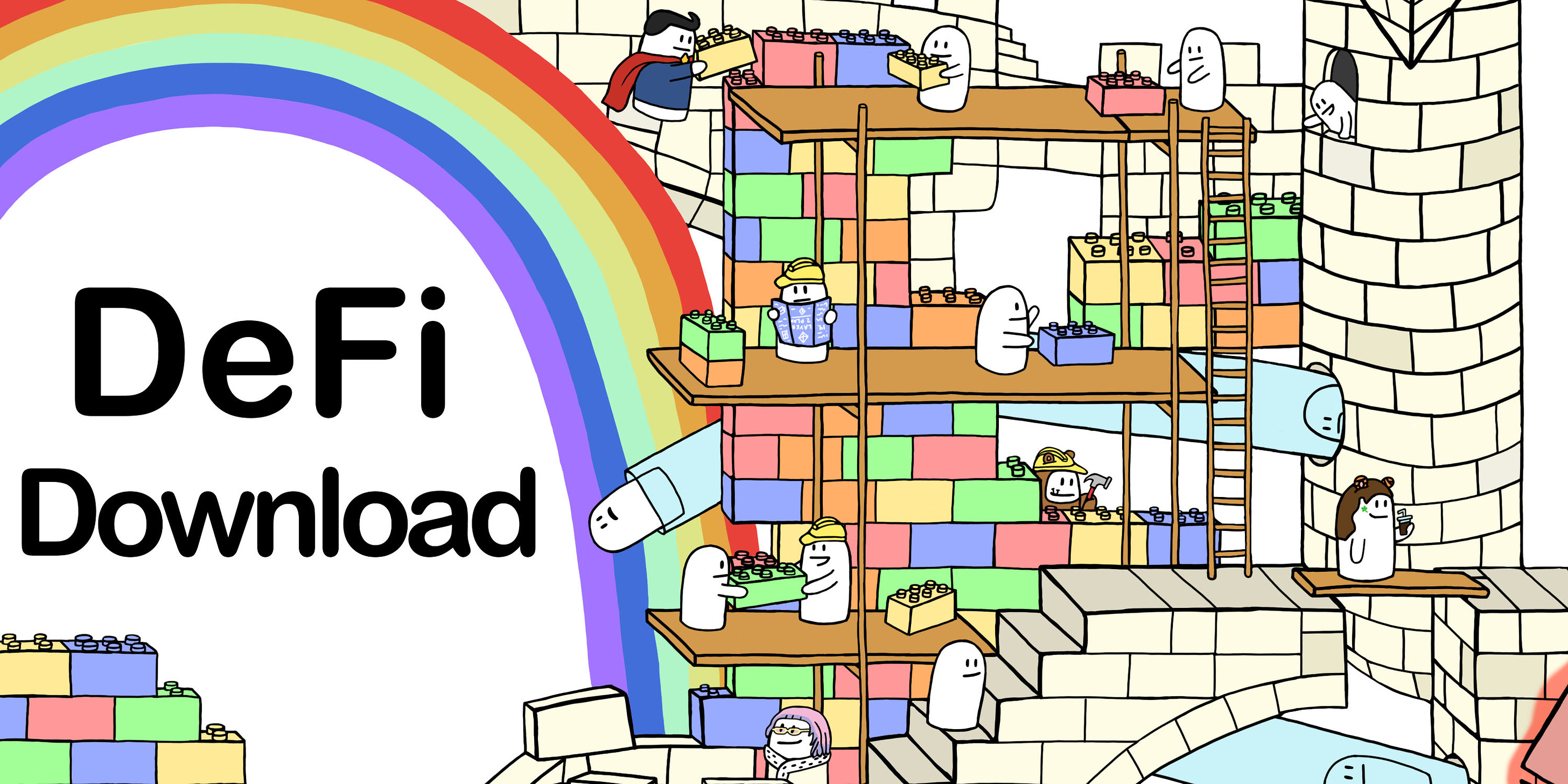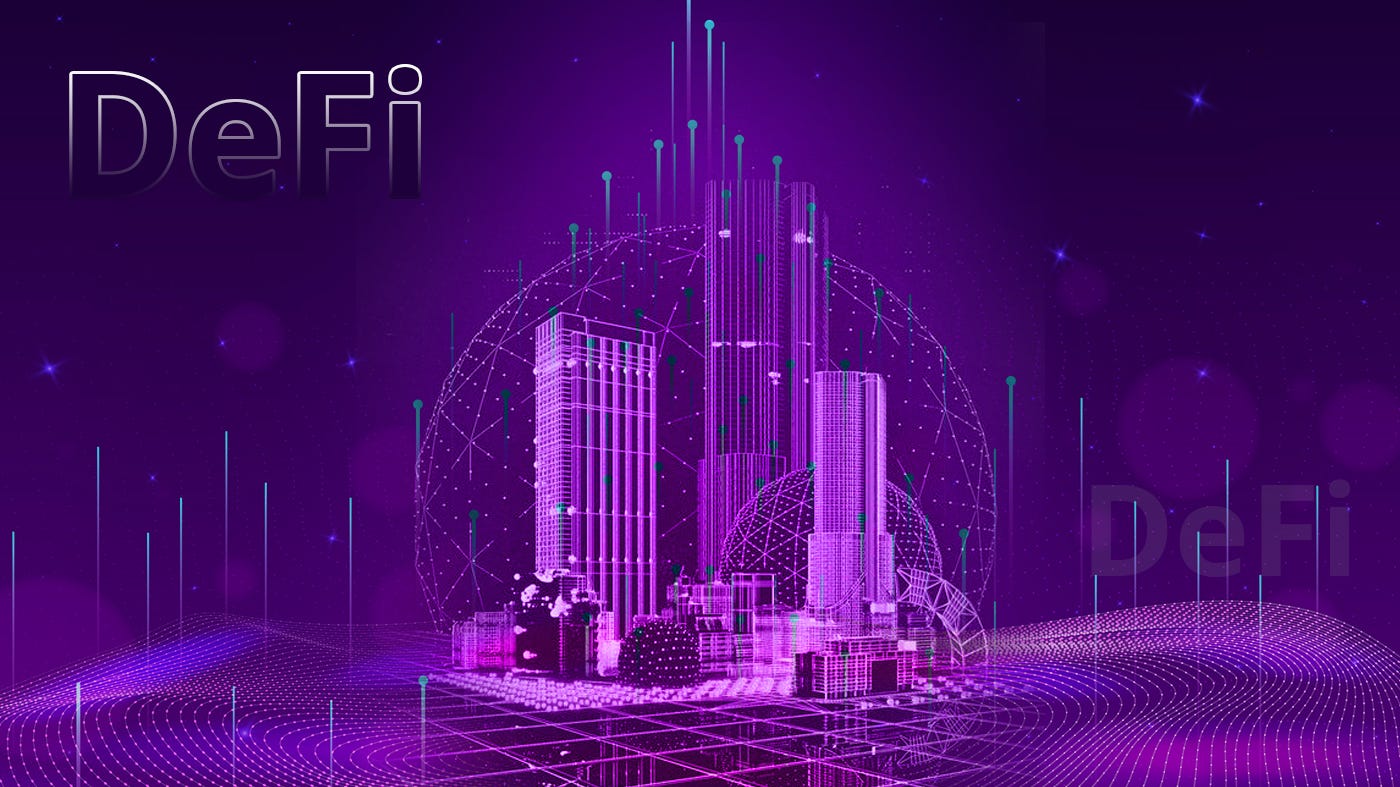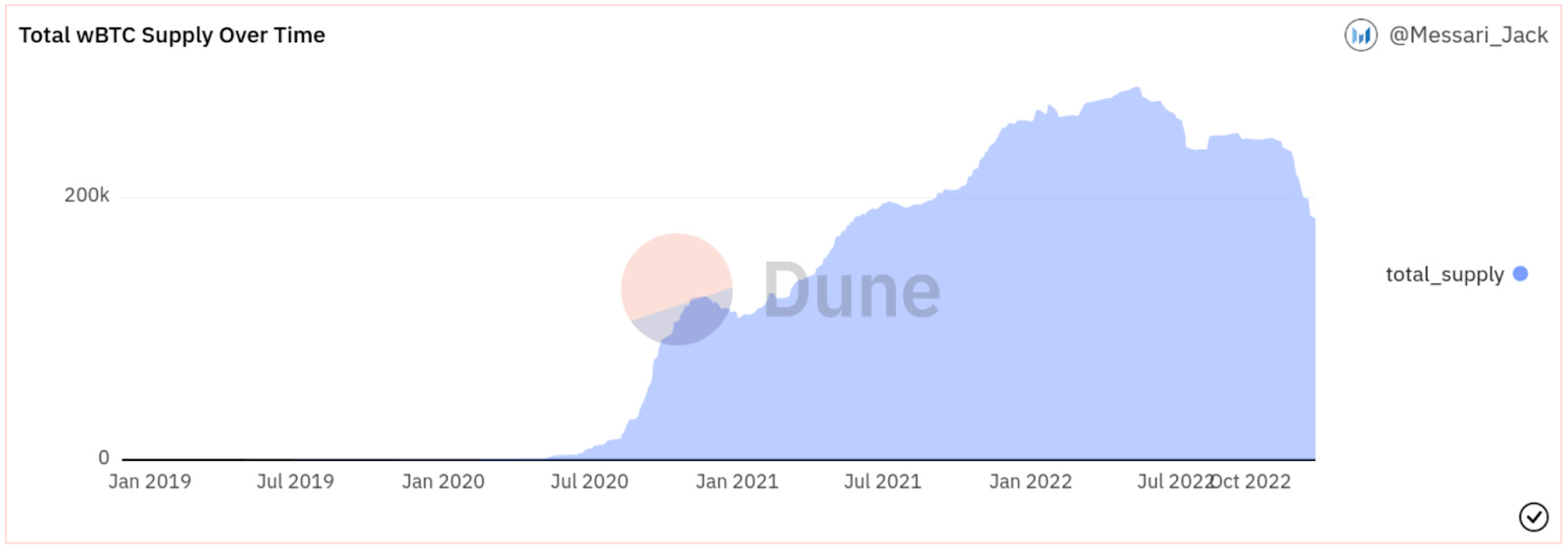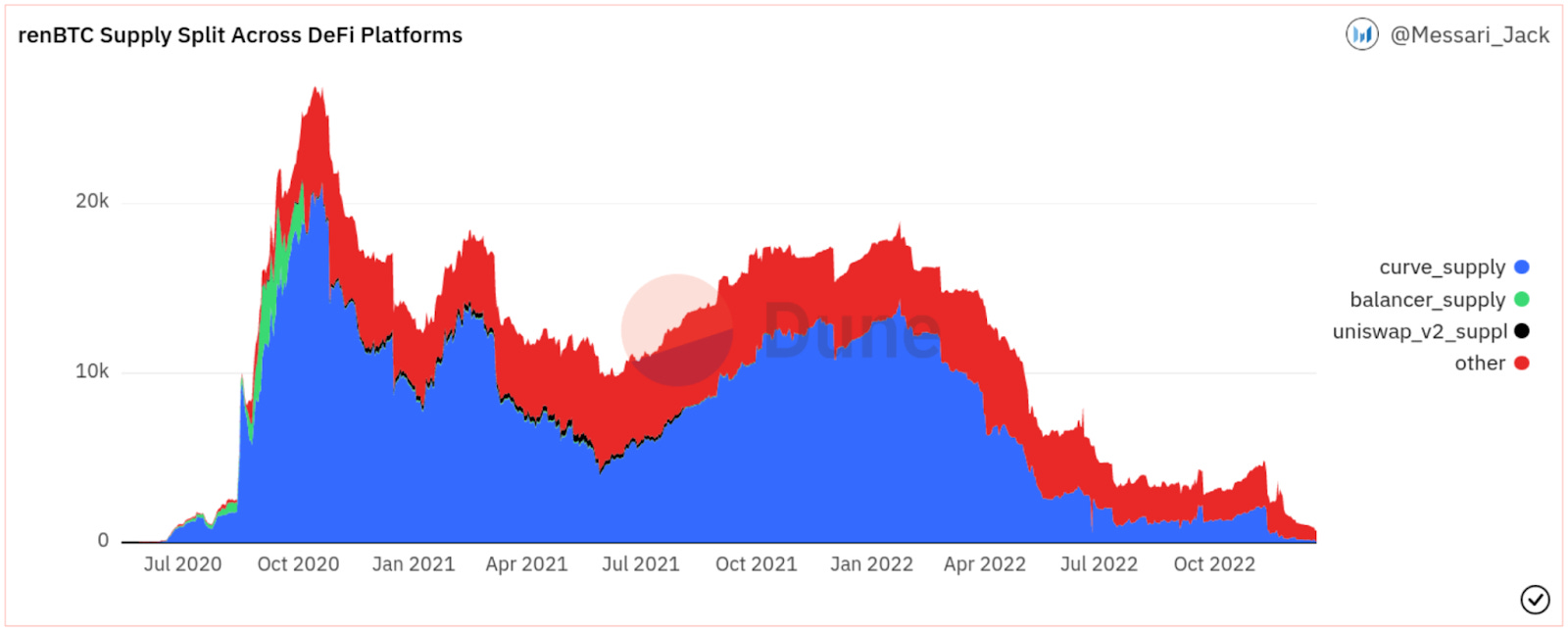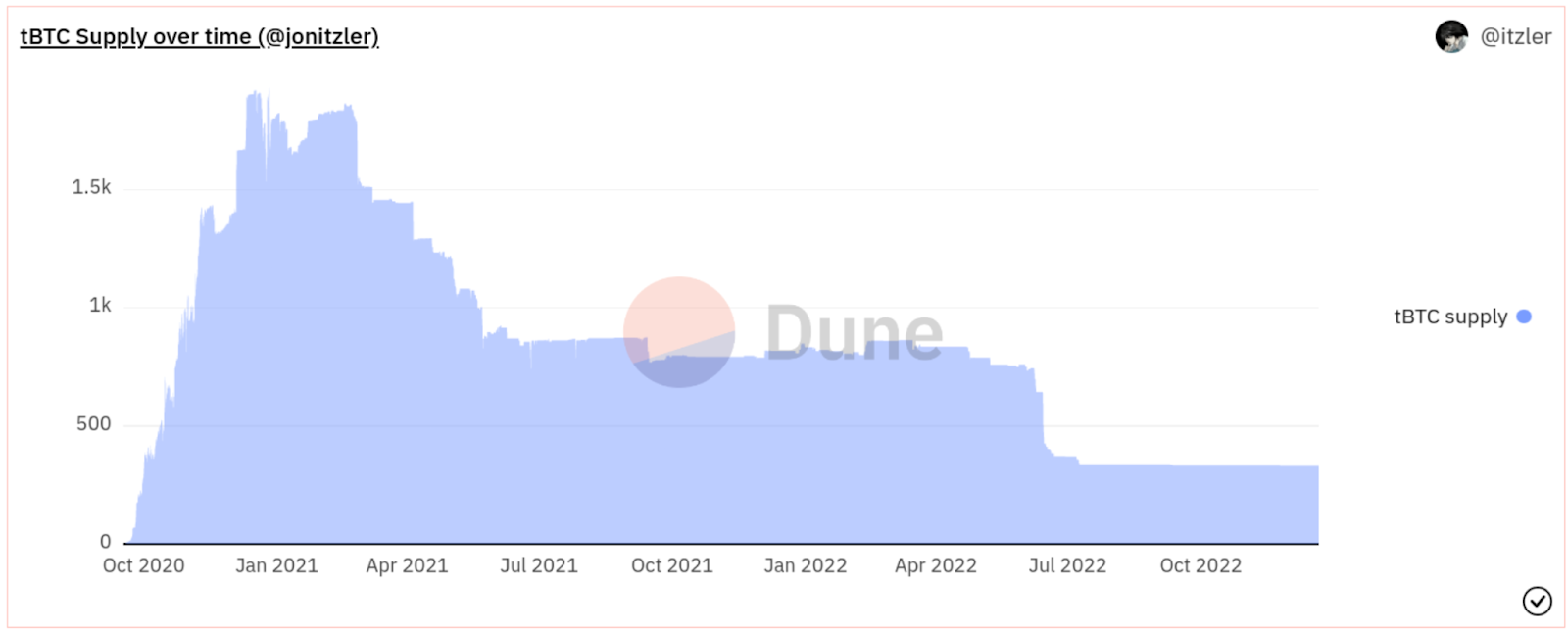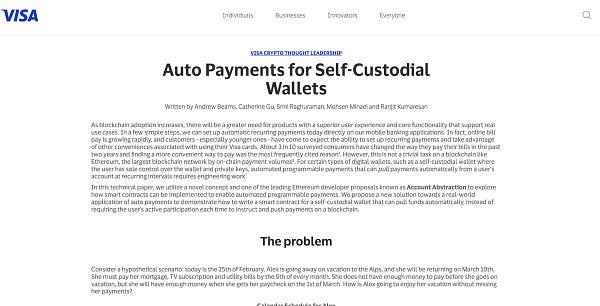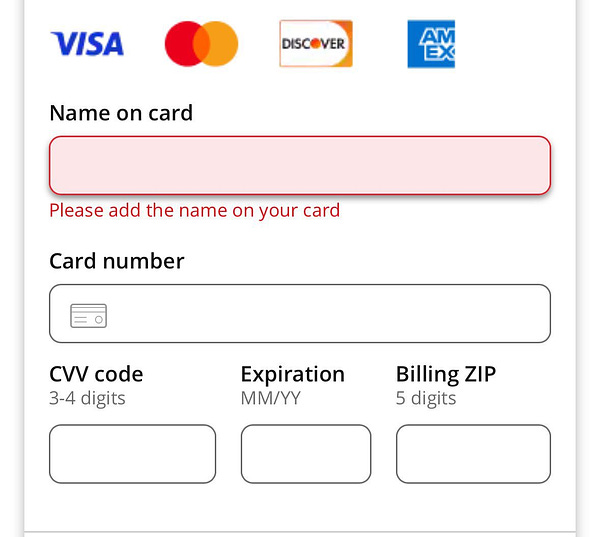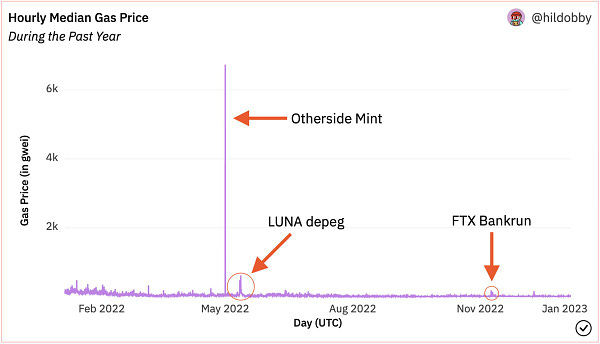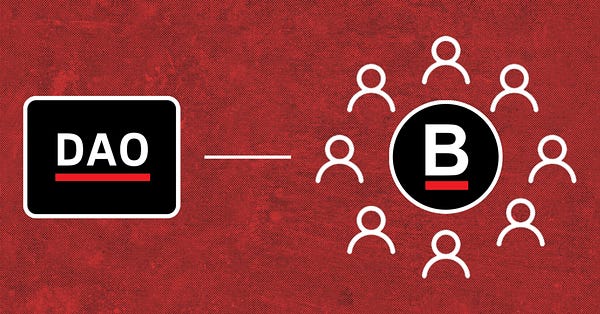Bankless DAO - The Bridge Edition | DeFi Download
The Bridge Edition | DeFi DownloadA Primer on Bridges, Bridging Bitcoin and Ethereum, Performing a Quick Bridge AssessmentDear Bankless Nation 🏴, We hope you enjoyed the holiday season and spent some time unplugged from the cryptocurrency world. Our first issue of the year is here to help you navigate DeFi in 2023 on which ever chain the protocol you want to use is found. Do you want to use Curve on Ethereum or Cosmos, Uniswap on Polygon or Optimism? Moving between L1 chains, and the many L2 scaling solutions requires a user to cross a bridge. All bridges are not created equal, some require more trust than others, and some are completely centralized. Jake and Stake first introduces the various kinds of bridges that exist and what makes them different. Austin Foss explores the state of bridging the top two L1 chains, Bitcoin and Ethereum. Then d0wnlore closes with some helpful methods you can use to assess the safety of a bridge for yourself. Considering how much value was lost in 2022 through bridge related failures, having a general understanding of how we traverse across different blockchains has become a core competency. Effects of a bridge failure can make or break some protocols, side chains, or other scaling solution you may be bridging your assets to or hold the assets of. This is the DeFi Download and all you need to know about bridges! ⚡️ Contributors: BanklessDAO Writers Guild (0xzh, d0wnlore, Austin Foss, Jake and Stake)
This is the official newsletter of BanklessDAO. To unsubscribe, edit your settings. The Bridge Edition
A Primer on BridgesAuthor: Jake and Stake Bridges are smart contracts that intermediate the flow of assets to and from different blockchains. In essence, they connect two chains together. These chains can be different Layer 1s (L1s)—like connecting Ethereum to Bitcoin, L1-L2 connections—Ethereum to Arbitrum, or L2-L2 connections—Optimism to zkSync. Remember that blockchains are like closed systems. They have different rules and communication protocols that make it difficult for them to exchange information—and value—with each other. However, bridges offer a solution. They connect blockchains together and serve as a canal between different liquidity sources. Bridges allow users to try features on different ecosystems without having to buy additional assets or use fiat exchanges as an intermediary. Cross-chain BridgesWhen you want to move an asset from one chain to another, L1 to L1, you have to use bridges to facilitate the migration. For example, suppose you want to move an asset X from chain A to chain B. First you’d deposit X in the bridge contract on A. X → A bridge This contract would communicate to a bridge contract on chain B and issue a derivative representing that deposited asset X, denoted as X’. X → A bridge → B Bridge → X’ You can then trade, swap, or earn yield on X’ however you’d like, and this asset should always be backed by X on chain A. The process is similar if a user wants to exchange their X’ on B for X on A.
Some examples include the Polygon sidechain bridge and WBTC. Note that cross-chain bridges require some kind of intermediary or trusted party to perform the exchange. Bridged L1 assets can only be verified by the respective protocol’s permissioned node operators. Often this is the most risky bridge (all things equal) because you have to trust:
L1-L2 BridgesWe’ll be focused on bridges to Optimistic Rollups, but ZK Rollups function in a similar manner. ZK solutions aren’t fully EVM equivalent yet, and they don’t necessitate a waiting period for withdrawals, bridging back to the L1. Short introduction to Optimistic RollupsOptimistic rollups move state storage and computation off-chain and instead write small pieces of data on-chain. These little commitments are made up of compressed transaction data (called fraud proofs) to verify transaction validity. This replaces the cost of many individual transactions with that of a single transaction: publishing the fraud proof. As a result, the variable cost becomes a fixed cost. Optimistic rollups are “optimistic” that the transactions are valid, unless challenged by a verifier, as a result, withdrawal transactions can take up to 14 days to be finalized. Mighty Morphin’ Asset TimeSimilar to bridges between different L1s, users can deposit their assets into a bridge on Ethereum which relays information to the rollup where a corresponding amount of assets is minted. X → L1 Bridge Contract → X’ Assets are deposited into the L2 contract and new assets are minted on the L2. Users can deposit their assets into the bridge contract or deposit their assets into the L2 contract directly.
This is the most censorship-resistant method. User transactions are compressed into “batches”. Transactions with inputs to the contract are considered deposits, those with outputs back to L1 are considered withdrawals. Sequencers (L2 transaction processors/batch creators) are required to publish these transactions as a part of their batch, otherwise their batch will be considered incorrect. You can think of these kinds of transactions as emergency exits (and entrances). There are other varieties of bespoke bridges that accept assets and mint their own derivatives on the L2, however not all of these derivative assets should be considered “canonical”. Rollups inherit the security of the L1 they’re scaling, so they unavoidably have the same liabilities. So the main risk here is that the rollup contract becomes compromised. The risk is substantially lower compared to L1-L1 bridges. Cross-L2 BridgesThese bridges help different L2 ecosystems connect assets with each other. L2-L2 bridges have similar liquidity problems as L1-L1 bridges. The difference here is that they share the L1 as a path for asset migration. This can extend settlement times and increase costs as multiple transactions must be made to move assets. The benefits of L2 bridges are
Liquidity-based bridgesUsually, when assets are deposited on bridges a synthetic asset is minted and transferred to the specified address. However, projects like Hop already have a pool of assets on L1 and a pool of synthetic versions on L2. This allows them to quickly transfer tokens as soon as they’re received. This is especially useful for quickly bridging to and from optimistic rollups which have challenge periods for transaction settlement. LPs can deposit assets into the bridge and earn fees on their assets. In exchange for this service, bridge users receive faster settlement times, avoiding the challenge period for receiving their assets. Note that LPs take on some risks associated with fraudulent transactions and earn fees in compensation. Trust AssumptionsTrustful Bridges In this case, the bridge holding customer funds is controlled by an entity or set of actors. This could be via smart contracts, a multi-sig, or an entirely off-chain system. This is the most centralized version of bridges. This can allow the bridge controllers to quickly make updates and improvements, but when users put their funds into these bridges, they’re trusting that the entities that control them are benevolent and operationally secure—a dangerous proposition in crypto. Depending on how derivative assets are issued, the bridge can censor or seize your funds, WBTC’s bridge for instance. There have been several cases of bridges losing customer funds due to key mismanagement. Trustless Bridges Trustless bridges operate using only smart contracts—there are no key holders. In this case, the security of the bridge depends on the security of the blockchain and the particular smart contract. While this greatly reduces the attack surface, bridges are still liable to smart contract risk. The security of a derivative asset is based on the security of the bridge. This means that both the blockchain and the bridge have to be secure. Many of the largest hacks involved bridges. Stay safe out there! Bridging Bitcoin and EthereumAuthor: Austin Foss Amidst the tension between the Bitcoin & Ethereum communities there has been enough motivation in the overlap in users of both chains to build bridges between the two. Bitcoin on EthereumIn April 2020, The Defiant published an article on the various "...Bitcoin-on-Ethereum Efforts..." taking place at the time. On a scale from less to more decentralized they ranked six solutions: wBTCFirst on the list wBTC with by far the largest market cap today at more than 180,000 minted according to CoinGecko. Announced in 2018 by its founding company BitGo, wBTC quickly became the go-to way to use BTC in DeFi, having integrations with infrastructure like MakerDAO's vaults drove rapid adoption. Trust in the security of wBTC over other bridges is based on trustworthiness of BitGo who are currently the only custodian—the role that "[m]inting will only be possible" to be performed by. This centralized security in BitGo is what maintains the 1:1 peg of BTC to wBTC. As an example of centralization being used for good, Coinelegraph reported that BitGo had refused to redeem 3,000 wBTC for Alameda. While creditors in Alameda's bankruptcy case would likely be happy to hear that a few million worth of assets was safe, just a drop in the bucket out of billions, this kind of centralized interference goes against a core founding principle of crypto; trustlessness. renBTCOn the decentralized half of The Defiant's scale and the largest of the three in market cap is renBTC, currently at just above 700 minted on chain according to CoinGecko; but that is likely to rapidly decline. Unfortunately for the bridge protocol, "Alameda acquired Ren" in 2021. This is a pretty big loss for DeFi as the Ren bridge acted as a decentralized option to BitGo's centralized bridge. Ren 2.0 was announced prior to the FTX collapse, but if or when it launches is unknown. Compared to wBTC, renBTC minted on Ethereum never got close to 100,000 tokens but peaked at 20,000. Hopefully it would take its decentralization a step further because, as 1.0 currently operates:
tBTCv1Launched in September of 2020, after one previous attempt in May, BTC was bridged to Ethereum in the form of tBTC. In its first year of life, supply peaked at over 1,500 being minted using its bridge. The product was originally designed as a decentralized application using an intermediary network of nodes called the Keep Network. This decentralized network bridges the Bitcoin and Ethereum chains using "Keep's random beacon, and threshold signatures." It was designed such that node operator's had to stake KEEP tokens in order to operate a random beacon node, but also stake an amount of ETH to collateralize the tBTC they would mint; minted supply would be maintained 1:1 but also insured by ETH. What made the tBTC bridge the most decentralized on The Defiant's scale is the random selection of node operators for deposits and redemption. When a user wants to bridge their BTC to Ethereum they send a deposit request and a BTC deposit address is generated for the user from the random beacon nodes, selecting three signers at random from the pool of ETH stakers. Then the user deposits their BTC to that address and a corresponding amount of tBTC is minted for them on Ethereum. To redeem tBTC for BTC on Bitcoin a similar process would happen in reverse. If a node operator missbehaved or failed to perform the 3-of-3 ECDSA signature they would be slashed. Network MergerIn all this, where does Threshold Network come in? Throughout 2021 discussions were being held between Keep and another team called NuCypher, resulting in the merger of the two networks in early 2022. Keep NetworkKeep began as a project developed by a company called Thesis founded by CEO Matt Luongo. Thesis has several other projects spread throughout the crypto ecosystem including the Bitcoin focused Fold App, a web3 wallet called Tally, and an Ethereum AMM aimed at stable coins in a similar way to Curve. When introduced by Zooko on the ZCash forums in 2019 he listed several contributions by Keep to the broader ecosystem including EIPs 159 and 1108, and ZIP-221. This shows a commitment to projects focused on trustlessness, self custody, and privacy across several L1 chains; not much of a stretch to make the primary project of Keep an L1 bridge. Two of Keep Network's backing partners include Polychain and Andreesen Horowitz. Messari shows the KEEP distribution as follows:
NuCypherNuCypher's big project is a tool called Proxy Re-Encryption (PRE). This is a tool enabling distributed access control to encrypted data without ever having to entrust the unencrypted data to a centralized party. NuCypher's design for PRE closely resembled Keep's method for bridging. Nodes stake NU and perform the encryption service in a distributed way. In October 2019, Coindesk reported that NuCypher had raised a 10.7 million USD round of funding for 8% of the token supply, and reminded readers that 31% had previously been sold for 4.4 million in 2017. A year after the second round, in September 2020, a further 125 million USD worth of ETH was staked in exchange for NU tokens. NuCypher is also backed by Polychain. Threshold NetworkAfter the merge both the KEEP and NU token functionalities were replaced by Threshold's T ERC20 token on Ethereum. Both Keep's Random Beacon and tBTC, as well as NuCypher's PRE, are all performed by nodes that have staked 40,0000 T and earn rewards for doing so. None of these three projects are their own blockchains. Their native tokens all exist on Ethereum, and the nodes that have staked balances perform distributed cryptographic services in a trustless way. Now just under the Threshold name but the other two will still appear in documentation frequently. When Threshold launched the T token had the following issuance:
tBTCv2A revision of the tBTC design was necessary for the project to scale. Due to the tBTC supply needing to be over collateralized by ETH it put a cap on the supply of tBTC as it could only ever be a percentage of the value node operators had to stake in ETH. Version two of tBTC makes four major changes. Formerly in tBTCv1:
Now in tBTCv2:
Coverage PoolsCoverage Pools were introduced in May 2021 as a tool to increase the supply cap of tBTC, limited by staked ETH. Coverage pools would allow the project to scale to the supply tBTC much further by allowing collateralization with more assets than just ETH. This of course could be expanded in the future to more coverage pools like, such as having a covETH option, covDAI maybe. Bearing a resemblance to MakerDAO's shift to multi-colateral DAI from a solely ETH back sing-collateral DAI. For now there exists just one KEEP only coverage pool where depositors are returned covKEEP, redeemable for their original deposits and rewards paid from protocol fees. In November of this year a proposal was made to start a Coverage Pool Migration from a KEEP to a T only pool. According to Matt this hopefully might be "live before optimistic minting". Optimistic MintingOptimistic Minting is an updated stop in the tBTCv2 roadmap, added in response to the FTX and Alameda impact on renBTC and "the need for truly decentralized infrastructure" the team is "accelerating the launch of tBTC minting as much as possible while preserving safety... expected to be live by the end of January." While permissionless minting is still the goal of the project, what this means is that the initial phase of minting tBTCv2 will be handled by two parties named "Minters" and "Guardians".
When permissionless minting will be implemented hasn't yet been given a hard deadline. Security Scares: Performing a Quick Bridge AssessmentAuthor: d0wnlore Bridges are used to transfer tokens across different blockchains and have become an invaluable staple for moving value across our ecosystem. They add interoperability between these disparate networks, increasing the velocity of transactions and ultimately making a better user experience for everyone. Some blockchains have this bridging mechanism built into the system architecture, such as those created with the Cosmos SDK or blockchains in the Binance ecosystem when BNB is transferred. Those that don’t, such as rollups in the Ethereum ecosystem, use smart contracts that take and burn tokens received from users on one blockchain, then mint and send derivatives of the same token on another blockchain through a sister smart contract. Some bridges may skip this burning and minting mechanism, instead keeping tokens in the smart contract as collateral to be used for later transfers. But bridges share the same risks as any other piece of software, with many in the past falling to vulnerabilities and operational security mishaps that have been known about for a long time. Native bridges may have more flexibility in defining their functionality compared to smart contract bridges, but this can also introduce complexities that make it harder for developers to write their bridge securely. Smart contract bridges will face the same bugs that can plague any other protocol, such as what address is ultimately tied to ownership of a bridge smart contract and how susceptible is that address to being compromised? Here we will highlight some of the red flags that users should look out for that may indicate that the developers of a bridge may be taking the old mantra of “move fast and break things” too literally. Depending on how a smart contract handles the tokens it receives and sends, a hacked bridge may cause subsequent troubles for the users that have tokens from that bridge. Before we do that, let’s highlight some of the bridges that have been compromised in the past, which occurred due to a mix of traditional software vulnerabilities or improper key management. 1. Has the bridge been checked for bugs?Check to see if your desired bridge has been audited and that the developers have provided a complete report to view, not just a summary of findings discovered. Even if the actual content of the report may seem incomprehensible, it acts as a vote of confidence that the developers have engaged with the security community to assess their bridge and made the results public. If a bridge has been audited take a brief look at the audit report summary to see if the developers have taken the findings to heart. In particular look for any vulnerabilities that have not been addressed by the developers. Are they ignoring low severity issues like gas optimization, making transactions more costly, but do not have a security impact? Or are they ignoring issues that make dangerous assumptions about how the smart contract will be interacted with, which may also be marked as a high severity issue by the auditor but was otherwise dismissed by the developer? 2. Do the bridge owners take security and risks seriously?It’s a bad sign if a bridge does not have a rich page identifying known risks with using their bridge and how they mitigate those risks. It’s one thing to not show an audit report, but not acknowledging and making users aware of the inherent risks involved with using a smart contract, or other software built upon blockchain technology, may signal that they take the importance of securely transferring tokens too lightly. It’s one thing for a protocol to tweet or message about how important security is to them. But if those words are not backed up by actual, detailed content, explaining how they take security seriously, then all that marketing just serves as a signal that the protocol does not find security important at all. 3. Is the bridge the team's main focus?Arguably a bridge that is the main focus of a development team means that the bridge will have more attention devoted to it, which can translate to more resources spent to secure it. The same may not be said for a bridge that is just another project for them, perhaps one that’s just used in a supporting role for the development team’s main project such as another protocol or token. Most bridges that were compromised in the past were these types of support projects that were not as important as their owners main project, likely resulting in lower standards in keeping those bridges secure. Project Releases 🎉
Uniswap Launches in-App Fiat On Ramp
 1/ Go direct to DeFi 🚄
Starting today, you can now purchase crypto on the Uniswap Web App using a credit/debit card or bank transfer at the best rates in web3 thanks to our partnership with @moonpay! 💸
uniswap.org/blog/web-fiat-… renBTC will be shutting down
 1) Quick reminder 📣
The Ren network is currently operational but is expected to go offline in the near future. The exact date is currently unknown. This is out of our control, but we will do everything in our power to make sure the peg of Ren assets is maintained. Visa Releases Research Document
 At @Visa , we want to serve as a trusted bridge between the crypto ecosystem and our global network. Excited to share some update today, here is the 🧵 Binance.us Buying Voyager
China to Launch First National “Digital Asset” Marketplace
MetaMask x Paypal
 Our US users will now be able to fund their wallet with ETH via @PayPal! 🦊
Rolling out in the next weeks in the US, excl. Hawaii, through our mobile app (make sure to update to v5.13.0)🧵👇
consensys.net/blog/press-rel… MakerDAO Relaunches 1% Fixed Yield for DAI Holders
Chirping Birds
 Grayscale’s trusts are $7.5 billion underwater, a greater nominal loss to investors than FTX, and the sponsor must fight to keep it so in order to save its parent.
That sort of investor misalignment shouldn’t be possible for SEC reporting companies.
What’s the point of the SEC?  anyone still doing arbitrarily upgradeable DeFi smart contracts governed by multisig better have amazing opsec - regulators view it as a partnership or joint venture having custody over all deposits
hopefully if just in place for a short time it won't be prosecuted, but yeah...  You can easily make out this past year's most notable crypto events by looking at Ethereum gas usage 🧐
Source 👉 dune.hildobby.xyz/Ethereum-Gas  You're going to get wrecked if you don't understand Tokenomics.
But what IS Tokenomics and what should you watch out for?
Here's everything you need to know about Tokenomics:
(+ a free Tokenomics checklist)  Wells Fargo penalties:
$3.7 billion in 2022 for consumer abuses
$3 billion in 2020 for fraud
$2 billion in 2018 for toxic securities abuses
$1.9 billion in 2013 for banking violations
$5.3 billion in 2012 for mortgage abuses 🛠 BANK Utility (BanklessDAO token)With over 5,000 holders, BANK is one of the most widely held social tokens in crypto. So it bears asking, where are the best places to put our BANK to use? The five protocols below will allow you to deposit BANK in a liquidity pool and earn rewards. To get going, just click on the name, connect to the app, filter by BANK, and start earning passive income.  Resident tokenomist @ffstrauf turns inward, analyzing BanklessDAO's $BANK token and showing us how a movement becomes an incentivized community of buidlers (Cov @dippudo) ⚖️ BalancerBalancer has two 80/20 liquidity pools, meaning that you are required to deposit 80% BANK and 20% ETH in the pool. There is one pool on Ethereum and another on Polygon. Once you’ve provided liquidity, you’ll receive LP tokens. Keep an eye out for opportunities to stake these LP tokens. There is nearly 500,000 USD in the two Balancer liquidity pools. 🍣 SushiSwapSushiSwap has a 50/50 BANK/ETH pool. As with Balancer, you will receive LP tokens, and while you can’t stake them on SushiSwap’s Onsen Farm yet, you may be able to in the future. Liquidity providers earn a .25% fee on all trades proportional to their pool share. The SushiSwap pool has a little over 100,000 USD in liquidity. ⏛ Rari Fuse Pool- Deprecated SoonThis will be deprecated soon. The Rari Fuse Pool allows you to borrow against your BANK or earn huge APY by providing assets like DAI to the pool. At present, all borrowing is paused for this pool. There is over 450,000 USD deposited in the Pool 🦄 UniswapThe Uniswap V3 liquidity pool is 50/50 BANK/ETH, and provides a price oracle for the Rari Fuse Pool. By depositing in the Uniswap pool, you can earn fees and help enable borrowing on Rari. This pool currently has over 500,000 USD in liquidity. 🪐 ArrakisYou can also provide liquidity to the Arrakis Uniswap V3 pool. The ratio is about 2/1 BANK/ETH. This pool is new, and only has a bit more than $6,000 in liquidity. In the future, you may be able to stake your BANK/ETH LP tokens within the protocol to earn additional rewards. Get Plugged In🧳 Job OpportunitiesGet a job in crypto! Do you like solving hard problems, care about building more efficient markets for everybody, and want to work at the frontier of decentralized finance? Rook is looking for full time contributors, with salaries ranging from $169,000-$722,000. There are positions ranging from engineering, recruiting, product marketing, copywriting, and design. Sound interesting? Sign up for our referral program and go full-time DAO.
|
Older messages
Dude, Where’s My Year-End Bonus and Do Ethereum Killers Even Exist? | Bankless Publishing Recap
Tuesday, January 3, 2023
Top-shelf Educational Web3 Content Shipped Directly to Your Inbox
My Path in BanklessDAO | BanklessDAO Weekly Rollup
Saturday, December 24, 2022
Catch Up With What Happened This Week in BanklessDAO
Artifex Takes Digital Art Creation and Collection into New Spaces | Decentralized Arts
Wednesday, December 21, 2022
Dear Bankless Nation, Artists and developers continue to drive innovation in the realm of digital art. From generative art and highly curated platforms to interesting display spaces and metaverses,
Learning and Earning in Web3 | Bankless Publishing Recap
Tuesday, December 20, 2022
Top-shelf Educational Web3 Content Shipped Directly to Your Inbox
UNICEF x Gitcoin Partner to Revolutionize Philanthropy
Friday, December 16, 2022
You're reading State of the DAOs, the high-signal low-noise newsletter for understanding DAOs.
You Might Also Like
Bitcoin pullback could be set up for $370k bull run price target
Friday, February 28, 2025
Bitcoin's 27% slide raises prospects for rebound, aligns with historical cycle patterns. ͏ ͏ ͏ ͏ ͏ ͏ ͏ ͏ ͏ ͏ ͏ ͏ ͏ ͏ ͏ ͏ ͏ ͏ ͏ ͏ ͏ ͏ ͏ ͏ ͏ ͏ ͏ ͏ ͏ ͏ ͏ ͏ ͏ ͏ ͏ ͏ ͏ ͏ ͏ ͏ ͏ ͏ ͏ ͏ ͏ ͏ ͏ ͏ ͏ ͏ ͏ ͏ ͏ ͏
WuBlockchain Weekly: SEC Terminates Lawsuits Against Multiple Crypto Companies, Bitcoin Drops Below $80,000, OKX S…
Friday, February 28, 2025
On Friday, OKX market data revealed that BTC fell below $80000, reaching a low of $78258, with the current price at $80514, reflecting a 24-hour decline of 7.22%. ͏ ͏ ͏ ͏ ͏ ͏ ͏ ͏ ͏ ͏ ͏ ͏ ͏ ͏ ͏ ͏ ͏ ͏ ͏
FBI confirms North Korea-backed Lazarus hackers stole $1.5 billion from Bybit
Thursday, February 27, 2025
FBI tracks Ethereum laundering spree by North Korean hackers amid rising threat of cyber warfare in the crypto world. ͏ ͏ ͏ ͏ ͏ ͏ ͏ ͏ ͏ ͏ ͏ ͏ ͏ ͏ ͏ ͏ ͏ ͏ ͏ ͏ ͏ ͏ ͏ ͏ ͏ ͏ ͏ ͏ ͏ ͏ ͏ ͏ ͏ ͏ ͏ ͏ ͏ ͏ ͏ ͏ ͏ ͏
Interview with MicroStrategy Founder Michael Saylor: The Company Holding the Most Bitcoin in the World
Thursday, February 27, 2025
In this interview, Colin from WuBlockchain had an in-depth discussion with MicroStrategy founder Michael Saylor about the company's ongoing Bitcoin acquisition strategy, the growing adoption of
Abu Dhabi Invests $436.9M In Bitcoin ETF
Thursday, February 27, 2025
February 17th, 2025 Sign Up Your Weekly Update On All Things Crypto TL;DR Abu Dhabi Invests $436.9M In Bitcoin ETF Changpeng Zhao Sparks Meme Coin Rumours Coinbase Finally Lists POPCAT & PENGU
📈 BTC’s realised price (average acquisition price) reached an all-time high of $43,000; State of Wisconsin Invest…
Thursday, February 27, 2025
BTC's realised price reached an all-time high of $43000; Abu Dhabi's Mubadala Investment disclosed its BTC ETF holdings; South Korea to allow universities and charities to sell crypto donations
HashKey Exchange's Interpretation of the Hong Kong SFC Virtual Asset Roadmap
Thursday, February 27, 2025
We are pleased to see the Hong Kong government release the forward-looking and pragmatic “ASPI-Re” roadmap for advancing the virtual asset industry. ͏ ͏ ͏ ͏ ͏ ͏ ͏ ͏ ͏ ͏ ͏ ͏ ͏ ͏ ͏ ͏ ͏ ͏ ͏ ͏ ͏ ͏ ͏ ͏ ͏ ͏
Argentina’s stock market plummets amid President Javier Milei’s LIBRA memecoin scandal
Thursday, February 27, 2025
Argentina's economic landscape shaken as Milei's LIBRA endorsement turns into multi-billion dollar fiasco. ͏ ͏ ͏ ͏ ͏ ͏ ͏ ͏ ͏ ͏ ͏ ͏ ͏ ͏ ͏ ͏ ͏ ͏ ͏ ͏ ͏ ͏ ͏ ͏ ͏ ͏ ͏ ͏ ͏ ͏ ͏ ͏ ͏ ͏ ͏ ͏ ͏ ͏ ͏ ͏ ͏ ͏ ͏
Heated AMA Debate: 0G Team Responds to Allegations of CFX Soft Rug, Overvaluation, and Token Commitment Concerns
Thursday, February 27, 2025
This AMA primarily focused on the relationship between Conflux and 0G Labs, discussing 0G Labs' high valuation, fundraising structure, technical direction, and community concerns over transparency.
Pectra: Ethereum’s Next Major Upgrade
Thursday, February 27, 2025
Breaking down key changes included in Ethereum's Pectra hard-fork ͏ ͏ ͏ ͏ ͏ ͏ ͏ ͏ ͏ ͏ ͏ ͏ ͏ ͏ ͏ ͏ ͏ ͏ ͏ ͏ ͏ ͏ ͏ ͏ ͏ ͏ ͏ ͏ ͏ ͏ ͏ ͏ ͏ ͏ ͏ ͏ ͏ ͏ ͏ ͏ ͏ ͏ ͏ ͏ ͏ ͏ ͏ ͏ ͏ ͏ ͏ ͏ ͏ ͏ ͏ ͏ ͏ ͏ ͏ ͏ ͏ ͏ ͏ ͏ ͏ ͏
